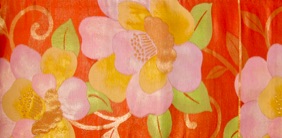Yoko Hiraoka
Traditional Japanese Music



Hogaku-Japanese traditional Music
Japanese traditional music has a rich and sophisticated history. The relatively long period of political and social stability during the Edo period (1603-1868) fostered development in the arts, yielding many rich musical genres, rivaling European classical music in its depth and complexity. Festivals, the aristocracy, mendicant monks, the Geisha world, Noh theatre all contributed their musical forms resulting in a colorful musical culture.
Through an enlightened social support system, successive Tokugawa governments decreed that some musical genres (Jiuta shamisen and koto genres, in particular) were the official domain of blind persons, and musicians were supported in part by government stipends. The government, for political reasons, also chose to recognize the legitimacy of a growing sect of Zen monks who used shakuhachi as a part of their meditational practice. Thus, from the Edo period emerged art music of a highly refined nature, using instruments that were Chinese in origin, but taking on an increasingly Japanese character. The physical construction evolved as did the musical ideas. Compositions were often inspired by literary, historical and poetic sources, rich with themes of love, natural beauty and the transiency of life.
Japanese music is melodic, as opposed to harmonic in structure. Complexity of the soundscape arises from the interweaving of different instruments using a broad palette of timbre as they play interlaced melodies. Attention to fine detail in both pitch and rythmic modulation is combined with a strong emphasis on overall cohesiveness in classical traditions that included solos and ensembles, both vocal and instrumentalal. Since the end of the Edo period and under the new influence of Western musical forms, Japanese composers have added to the classical repertoire with exciting new music, still fundamentally Japanese in spirit.
The Japanese instruments: The Koto, a six feet long floor harp, descends from an early court instrument imported from China in the eighth century.
The Shamisen, a three-string lute, came to Japan in the sixteenth century. These two instruments were at the core of secular art music during the Edo period.
The Shakuhachi, a vertical bamboo flute and the Biwa, a four-or-five string fretted lute, both Chinese in origin, evolved along different paths. The biwa was commonly used for centuries before the dawn of the Edo period. It was transmitted from western Asia through China, and also from India, to Japan. The secular biwa was the instrument of the streets; musical troubadours would edify, educate and entertain people with sung tales from antiquity, often describing epic battles, tragic heroism, or romantic trysts. These storytellers had an important role in maintaining the vibrant tradition of oral literacy in historical Japan.
Through much of the Edo period the shakuhachi was solely in the domain of the Zen Buddhist monasteries. It was regarded as a hõki (lit. 'vessel of the Dharma', the Buddhist law), a religious 'tool' for use by zen monks in what came to be called suizen or ‘blowing meditation’ in contrast to zazen, 'sitting meditation'. While the religious aspect of music was the focus of this tradition, the shakuhachi did not exist in a vacuum, and in the latter half of the Edo period it came to join the koto and shamisen in secular music ensembles.
With the advent of the Meiji period in 1868, Western musical thought and structure began to be examined by Japanese musicians. This was a time of great change in all of Japanese society. Age-old institutions and aesthetic traditions were deeply affected by the opening of society to western traders, academics and artists. The traditional instruments survived the transition, as new types of music emerged alongside the classical compositions. A new generation of Western-trained young Japanese performers and composers created compositions underpinned by a centuries-old Japanese aesthetic, yet with the melodic structures and tunings more familiar to European ears.
Japanese music is constantly evolving and the traditional instruments are being employed in a wide range of non-traditional roles, from atonal composition to avant-garde 'sound sculpture' as well as fulfilling their original roles in the classical traditions.